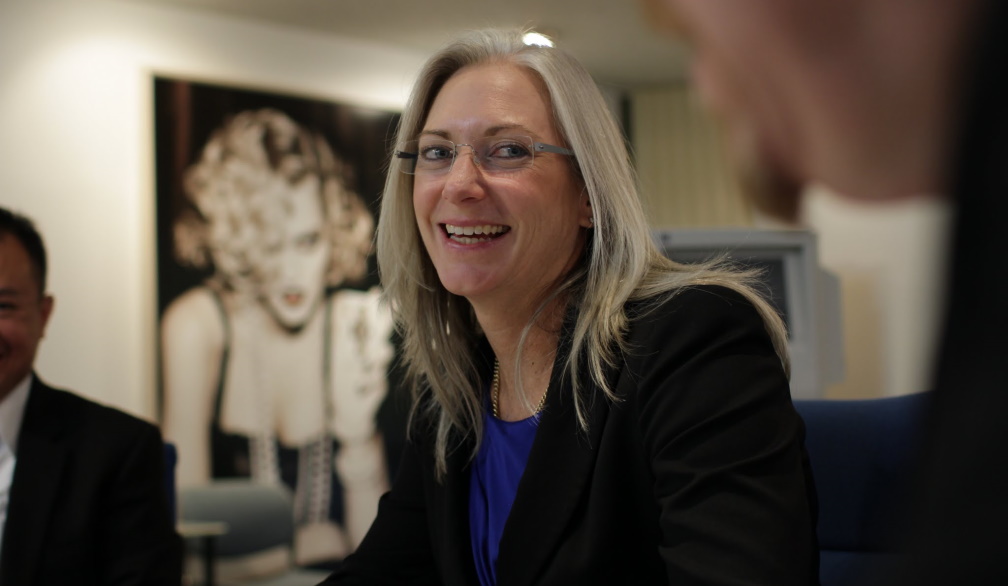New Cylite CEO eyes off the $4.8 billion global eyecare industry

Vision impairment impacts over 2.2 billion people globally yet 75% of eye conditions are avoidable or treatable. An Australian company is positioned to make a global impact in the $4.8 billion eyecare diagnostics industry with an Australian researched, designed, engineered and manufactured device that provides advanced 3D imaging of the eye. Their technology could also be a gamechanger for the early diagnosis of heart and brain conditions – two of Australia’s biggest killers.
Cylite’s award-winning Hyperparallel OCT (HP-OCT®) is the next-generation in diagnostic and imaging equipment for ophthalmologists and optometrists and will be officially launched globally in Sydney at the end of May. For the first time, a single piece of equipment can provide a comprehensive overview of the eye, providing micron level accuracy for the effective diagnosis and treatment of eye diseases. In the future, the hyperparallel technology also has potential to be applied to the diagnosis of cardiovascular and neural diseases.
“This is a game-changer for eye conditions that affect thousands of Australians, such as age-related macular degeneration, cataract, diabetic retinopathy, glaucoma and untreated refractive error,” said renowned scientist Dr Steve Frisken, Founder & Director of Cylite. “The annual economic cost of vision loss in Australia is estimated to be $27.6 billion[i], but earlier diagnosis and intervention can help to mitigate the impact of the increasing financial and emotional burden on society that many of these avoidable conditions can bring.”
While OCT technology has been around since the early 1990s, it has virtually remained unchanged for 30 years. Cylite’s HP-OCT® is superior to current technology as it better deals with the constant movement of the eye, using 1000 light beams instead of just one, and can provide full volume images of the eye. Opticians will also be able to see more patients and improve their experience by combining the functions of five existing instruments into a single, automated platform.
“Until now, no existing single instrument enables a comprehensive overview of the eye. In fact, the average ophthalmic clinic currently needs around six separate diagnostic instruments and a lot of time to understand the eye,” continued Dr Frisken. “This is because the eye is an extremely complex organ that is constantly in motion, making accurate imaging very challenging.”
A new CEO and an ambitious vision for a future in digital health
Kylee Hall, a proven leader in the Australasian Ophthalmic Industry, has taken over as Cylite’s CEO from renowned scientist Dr Steve Frisken. Ms Hall brings a stellar industry career in delivering products into the medical and ophthalmic markets. Dr Frisken will continue in an executive leadership role to provide operational and innovation guidance to the company.
“Despite the challenges of COVID, it is an incredibly exciting time at Cylite and I am very motivated by the incredible impact the HP-OCT® technology will make globally. The company is going through a huge expansion period with over 70 employees and a new facility recently leased in Melbourne that will provide 2,500m2 of office, laboratory and production space,” said Ms Hall. “There is already a lot of global interest around distribution of the product and we look forward to making some exciting announcements later in the year.”
“We have a strong product pipeline based on proprietary, protected technology which will allow us to grow to become a leader in the field of ocular diagnostics and to move into other areas including neurological and cardio-vascular diagnoses, with growth through both hardware sales, and software and service offerings. We have several research sites around the world already using the technology and a long list of ophthalmologists and optometrists eager to get a device for trial in the next few months. Our Australian launch will be in May and Europe is scheduled for Q1 2023.”
“Cylite’s technology also has huge potential in relation to AI and big data. With over $25 million in private and government investment to date and a solid roadmap for the future, I am looking forward to establishing Cylite as world leader in digital health, which is estimated to be estimated be worth over $510 billion by 2026. The future looks incredibly bright for Cylite to become the next great Australian medical company,” said Ms Hall.
Cylite is the only Australian company working in the ophthalmic diagnostic OCT space, an area traditionally dominated by the USA, Germany, and Japan. Founded in 2013, the company is backed by some of Australia’s most experienced and entrepreneurial scientists drawn from the fields of photonics, optics, instrumentation, and software development. They were inspired by the challenge of delivering a product that could provide significant impact to the future eye health globally in light of the multiple challenges arising due to both the myopia epidemic and an aging population.
An Australian Therapeutics Good Administration listing and European CE Mark certification have recently been received for the HP-OCT® technology, which has been recognised with a suite of prestigious awards including the Engineers Australia Sir William Hudson Award, Australia’s Highest Engineering Honour, and Good Design Australia Best in Class Engineering Award.
Cylite have also demonstrated, patented and are in early product development of a novel measurement technique, Hyperparallel Holoscopy, which provides for cellular-level imaging of the retina.
“The eye is the only organ in the human body where you can non-invasively observe parts of the central nervous system, which could open up this technology to helping us to better understand brain and heart conditions. For example, more studies are indicating a positive link between understanding changes in the retina with early indicators to both heart disease and brain disease such as Alzheimer’s[ii],” finished Dr Frisken






















